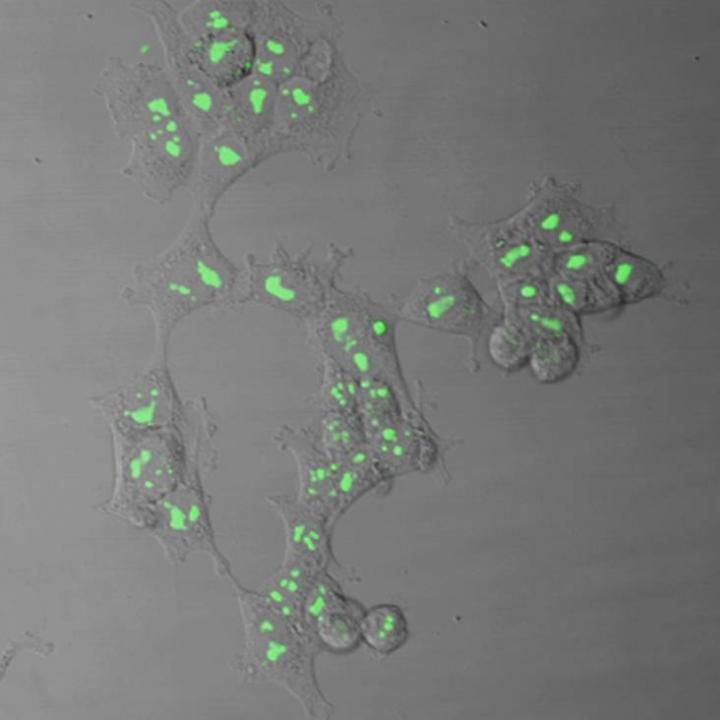
Green spots observed in cells indicate successful insertion of the foreign fluorescent protein gene by the PITCh system. A streamlined protocol for an alternative gene insertion method using genome editing technologies, the PITCh (Precise Integration into Target Chromosome) system, has been reported in Nature Protocols by Specially Appointed Lecturer Tetsushi Sakuma, Professor Takashi Yamamoto, Specially Appointed Associate Professor Ken-Ichi T Suzuki, and their colleagues at Hiroshima University, Japan.
The PITCh system is more convenient and effective than existing methods for inserting foreign DNA into targeted genomic loci by using genome-editing tools. This new versatile technique can aid the rapid progression of research in fields such as screening of new drug candidates and creating cell or animal models of human diseases.
Genome editing is an innovative technique used in genetic engineering that enables researchers to modify the genome not at random but at a particular target. In this technique, researchers employ engineered nucleases as "molecular scissors," which create DNA breaks at desired locations in the genome. When DNA breaks are repaired by repair pathways, genetic modifications including insertion of foreign DNA into the genome (knock-in) and replacement or removal of a targeted genomic locus are induced.
"The PITCh system is an alternative knock-in method that is independent of homologous recombination (HR), one of DNA-break repair pathways, unlike existing knock-in techniques that use genome editing tools like TALEN or CRISPR-Cas9, which mainly utilize HR," said Dr. Sakuma. "The existing knock-in techniques cannot be applied to every cell type and organism owing to variable HR frequencies. Therefore, we aimed at another repair pathway, microhomology-mediated end-joining (MMEJ), and developed the PITCh system."
In this article, we describe detailed procedures for constructing a desired vector, transfecting it into cells, selecting knocked-in cells, and checking after insertion together with an actual successful example. Furthermore, a simplified method of gene insertion in frog embryos is also described. This article will allow researchers to use this powerful tool easily, and will contribute to the progress of not only basic but also applied research in the life science.
Source: Hiroshima University
 Print Article
Print Article Mail to a Friend
Mail to a Friend
